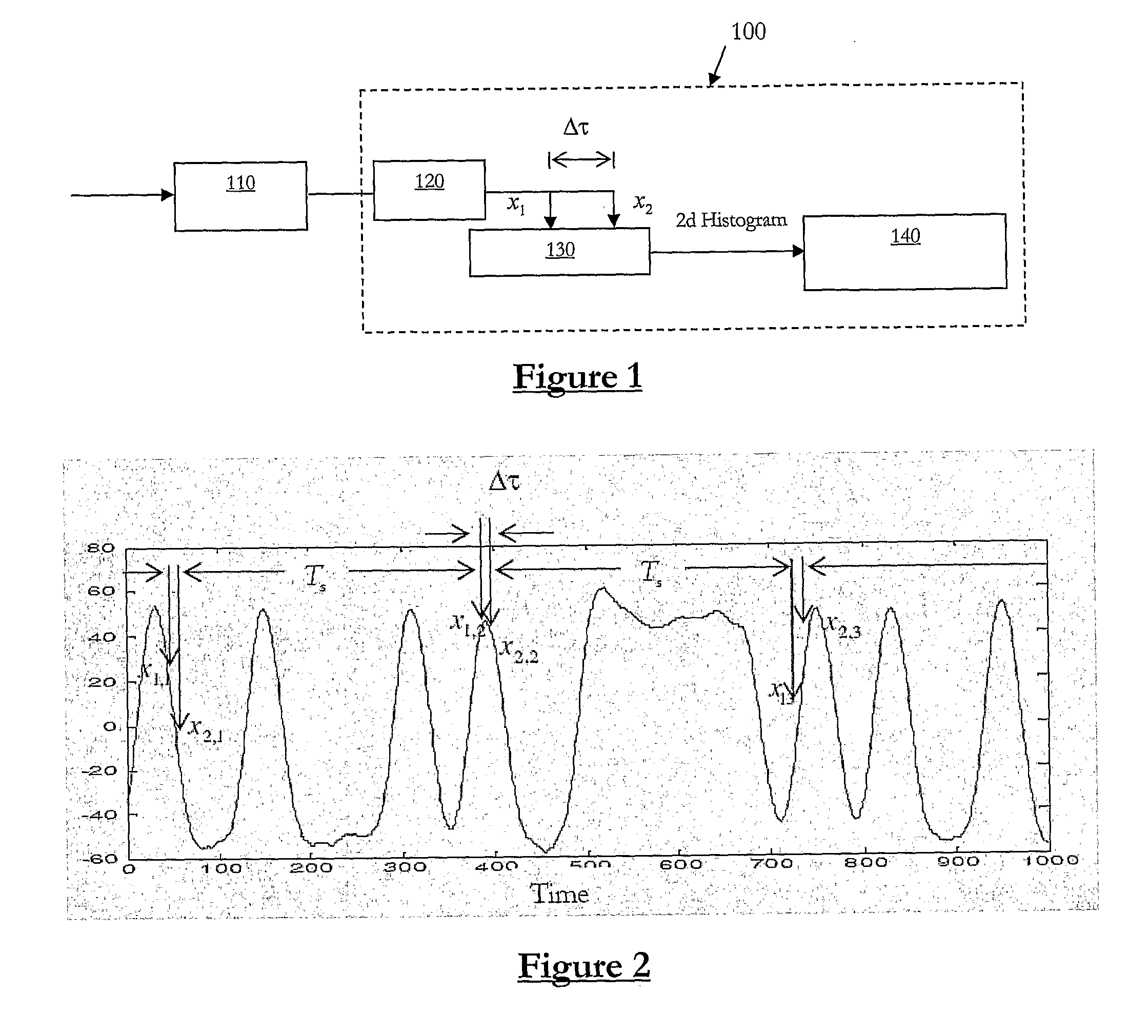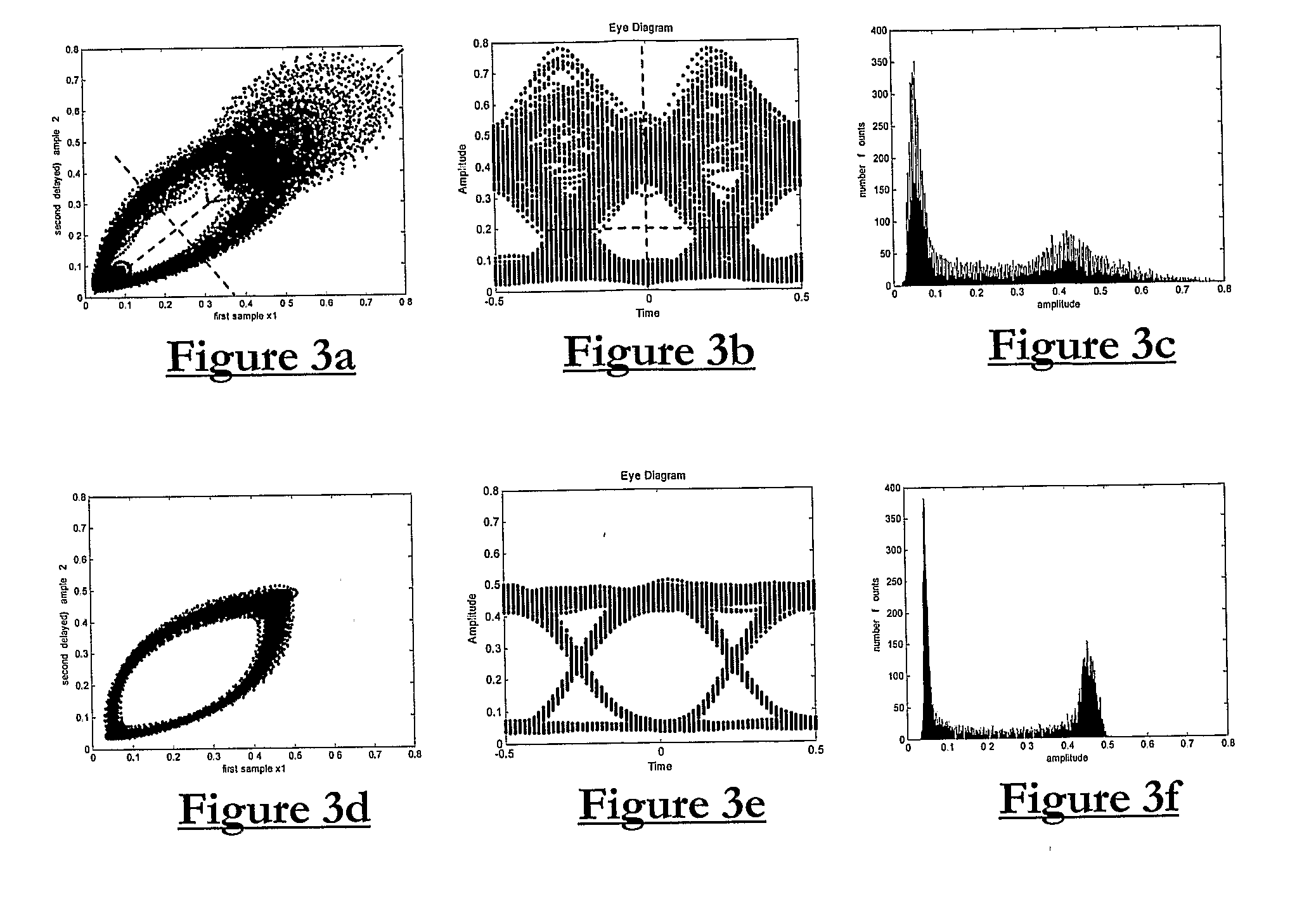Method and apparatus for sampled optical signal monitoring
a technology of optical signal and sampling method, applied in the field of optical performance monitoring, can solve the problems of high frequency signature, low accuracy, and low accuracy of typical clock extraction circuit, and achieve the effects of reducing receiver bandwidth, high frequency signature, and high receiver bandwidth
- Summary
- Abstract
- Description
- Claims
- Application Information
AI Technical Summary
Benefits of technology
Problems solved by technology
Method used
Image
Examples
Embodiment Construction
[0111]FIG. 1 is a schematic of a two tap asynchronous sampling optical signal monitor 100 in accordance with the present invention. A small amount of optical power is tapped from a DWDM signal and the optical channel to be monitored is selected by a tunable optical filter 110 and then detected by a high speed receiver 120. The receiver output is passed through a two tap delay line and asynchronously sampled by a dual channel A / D sampler 130, and the sample pairs (x1,n, x2,n) are then passed to a processor 140 to build a probability density function of numerous such sample sets. If x(t) denotes the optically demultiplexed channel then the sample pairs are given by:
x1,n=x(nTs)
x2,n=x(nTs+Δτ)[0112]where Δτ denotes the time between taps and 1 / Ts is the sampling rate. The monitor 100 of FIG. 1 provides a simple implementation of the present invention, by use of a simple two tap delay line after the optical receiver 120 so as to effect the tap delay Δτ in the electrical domain.
[0113]FIG. 2...
PUM
 Login to View More
Login to View More Abstract
Description
Claims
Application Information
 Login to View More
Login to View More - R&D
- Intellectual Property
- Life Sciences
- Materials
- Tech Scout
- Unparalleled Data Quality
- Higher Quality Content
- 60% Fewer Hallucinations
Browse by: Latest US Patents, China's latest patents, Technical Efficacy Thesaurus, Application Domain, Technology Topic, Popular Technical Reports.
© 2025 PatSnap. All rights reserved.Legal|Privacy policy|Modern Slavery Act Transparency Statement|Sitemap|About US| Contact US: help@patsnap.com



